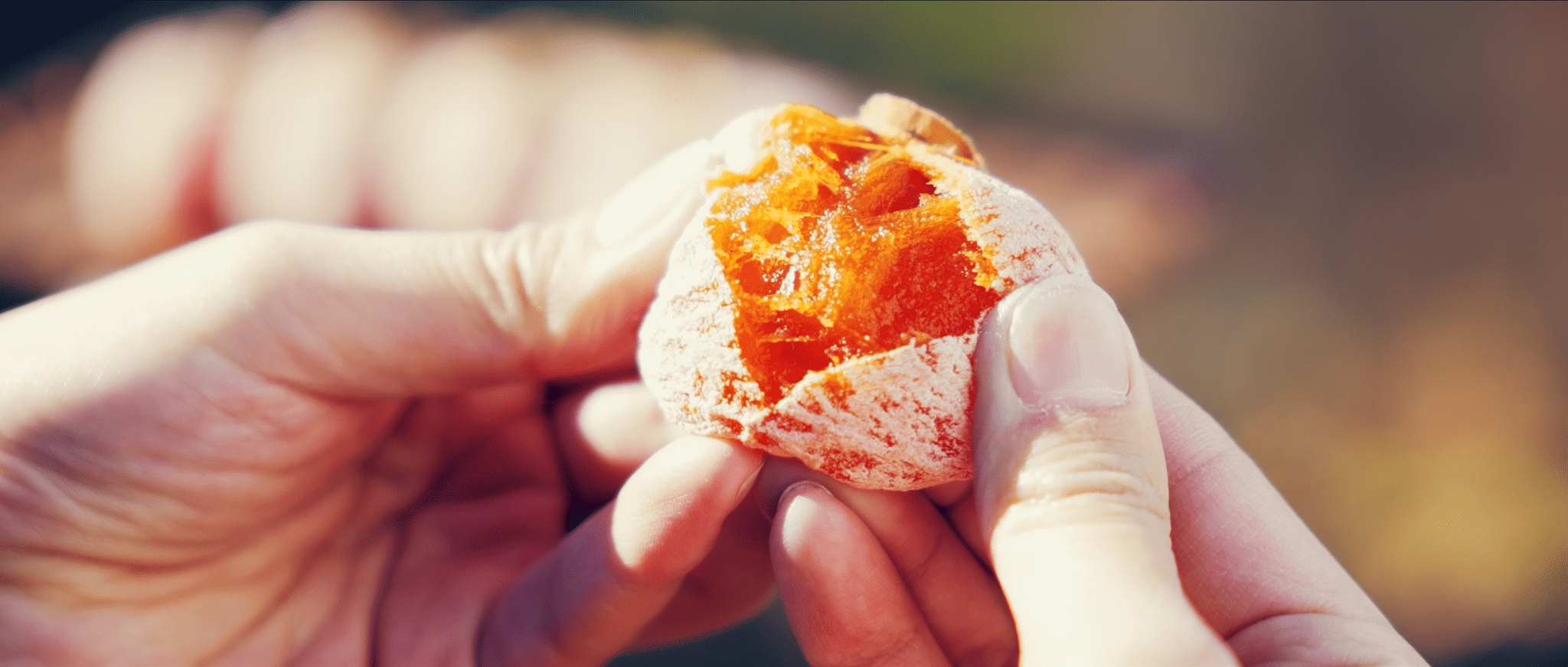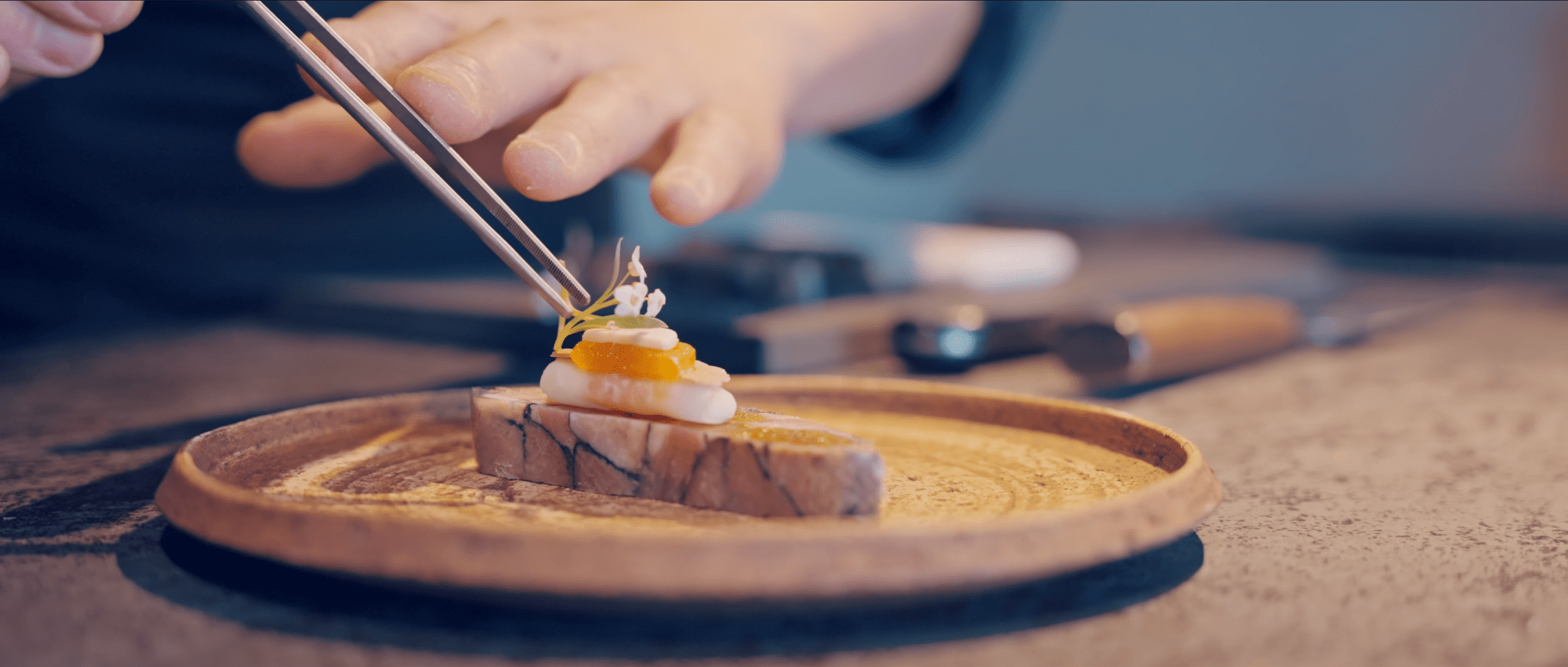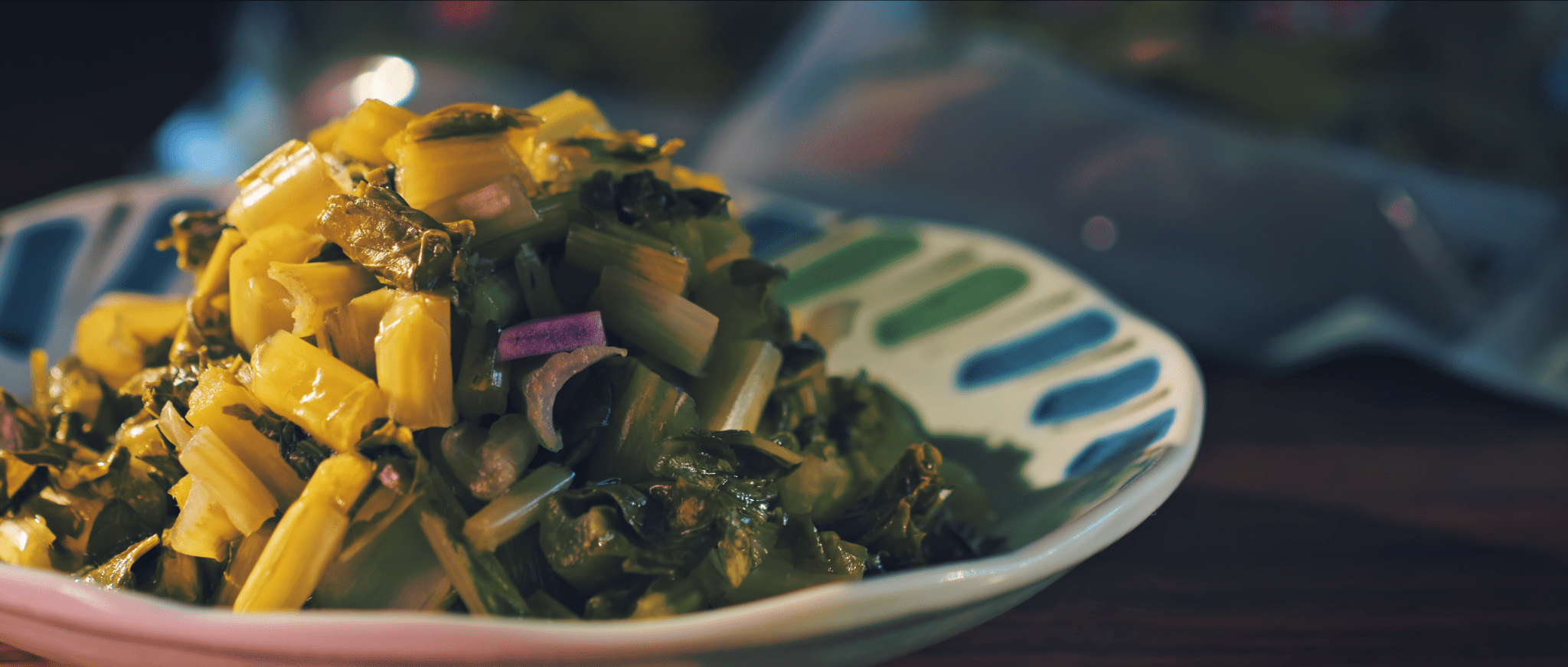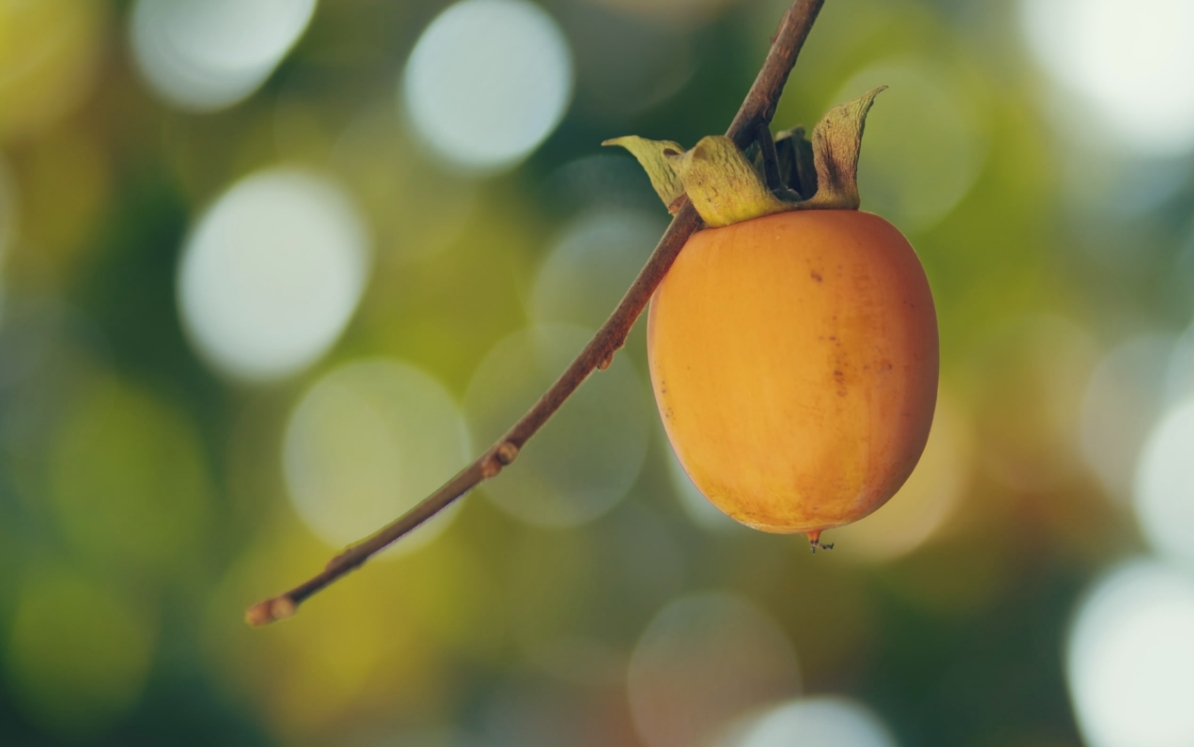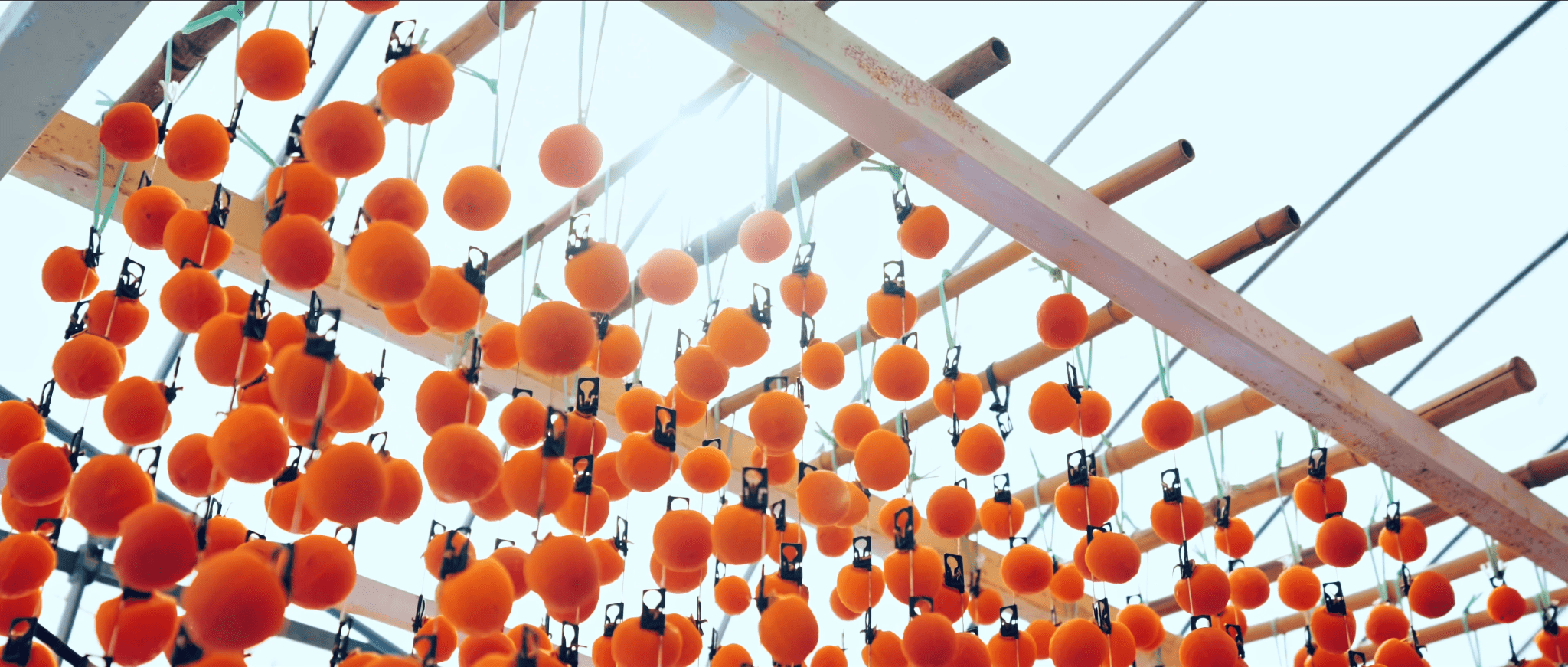
Premium Japanese dried fruit – ICHIDA-GAKI
芳醇な甘みを持つ日本のドライフルーツ − 市田柿
Persimmons are hung in rows from the eaves of houses from fall to winter. While the surrounding trees gradually fade away and begin to prepare for winter, the persimmons alone retain their bright, shining colors, and the soft late-autumn sunlight causes them to gradually lose their moisture content. This is the scene of dried persimmon production in Japan, and in persimmon-producing regions, dried persimmons have been made as a winter preservation food. The white powder on the outer skin of the dried persimmon, which has become one or two times smaller, is the result of the saccharification(the conversion of starches into sugars) of persimmon tannin as it dries. Dried persimmons have been loved in Japan since ancient times, and the more you bite into a dried persimmon, the sweeter it tastes. This dried fruit, created by the wisdom of our ancestors, appeared in Japanese literature as early as the 8th century. It is said that “when persimmons turn red, doctors turn blue,” and it is no wonder that its production flourished in regions with severe winter cold as a preserved, nutrient rich food.
Dried Fruits Nurtured by Nagano’s Nature
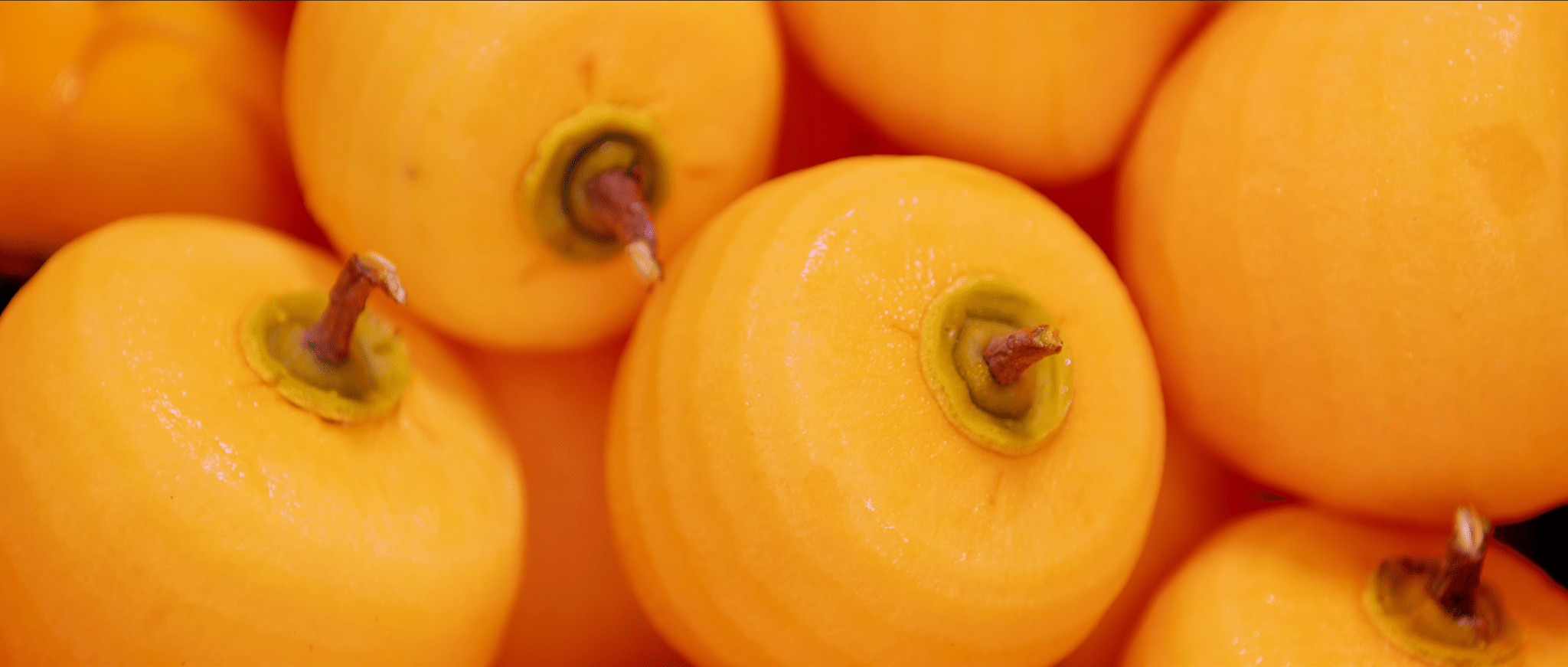
Nagano Prefecture boasts the highest production and shipment of dried persimmons in Japan. Among them, the “Ichida-Gaki”, certified as a Geographical Indication (GI) product by Japan’s Ministry of Agriculture, Forestry, and Fisheries in 2016, accounts for more than 95% of Nagano Prefecture’s dried persimmon production. Its cultivation history is said to be more than 500 years old, and it is called “Ichida-Gaki” because it was cultivated in the Ichida area of Takamori Town. Originally, they were called “yaki-gaki” (roasted persimmons) because they were eaten by roasting them over an open hearth to remove the astringency and bring out their sweetness. In 1921, the name was changed to “Ichida-Gaki” and it gradually began to be shipped out of the prefecture.
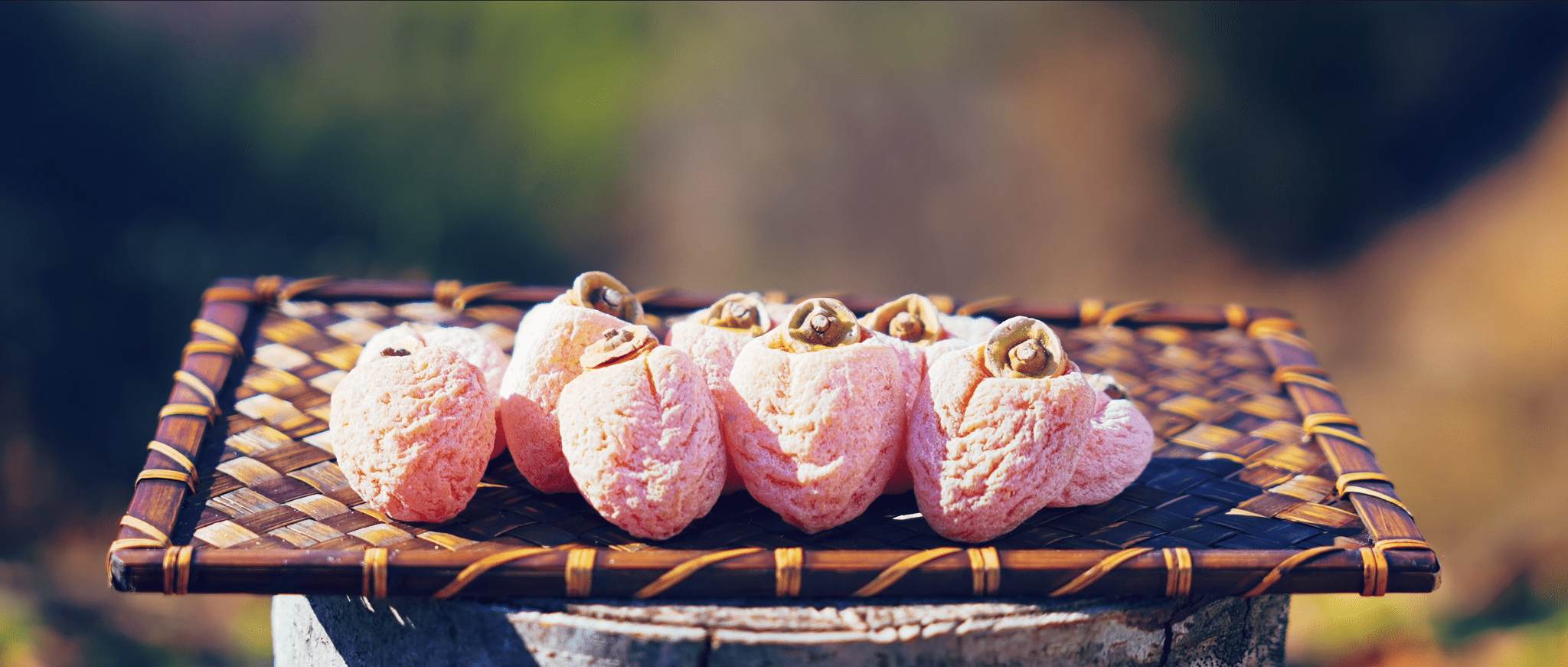
The persimmons are harvested from early to mid-November each year. The peeled persimmons are dried for about a month, and it is important to keep the surface soft while removing the moisture inside. The elements for making delicious dried persimmons are actually hidden in the climate of this region. Takamori Town is located in the southern part of Nagano Prefecture, which stretches 212 km from north to south, on river terraces on the west side of the Tenryu River, which winds between high steep mountains. The fog gives the persimmons a moderate amount of moisture and allows them to dry slowly and repeatedly, which is one of the charms of the Ichida-Gaki, giving it its chewy texture.
Bringing Japan’s Ichida-Gaki Overseas
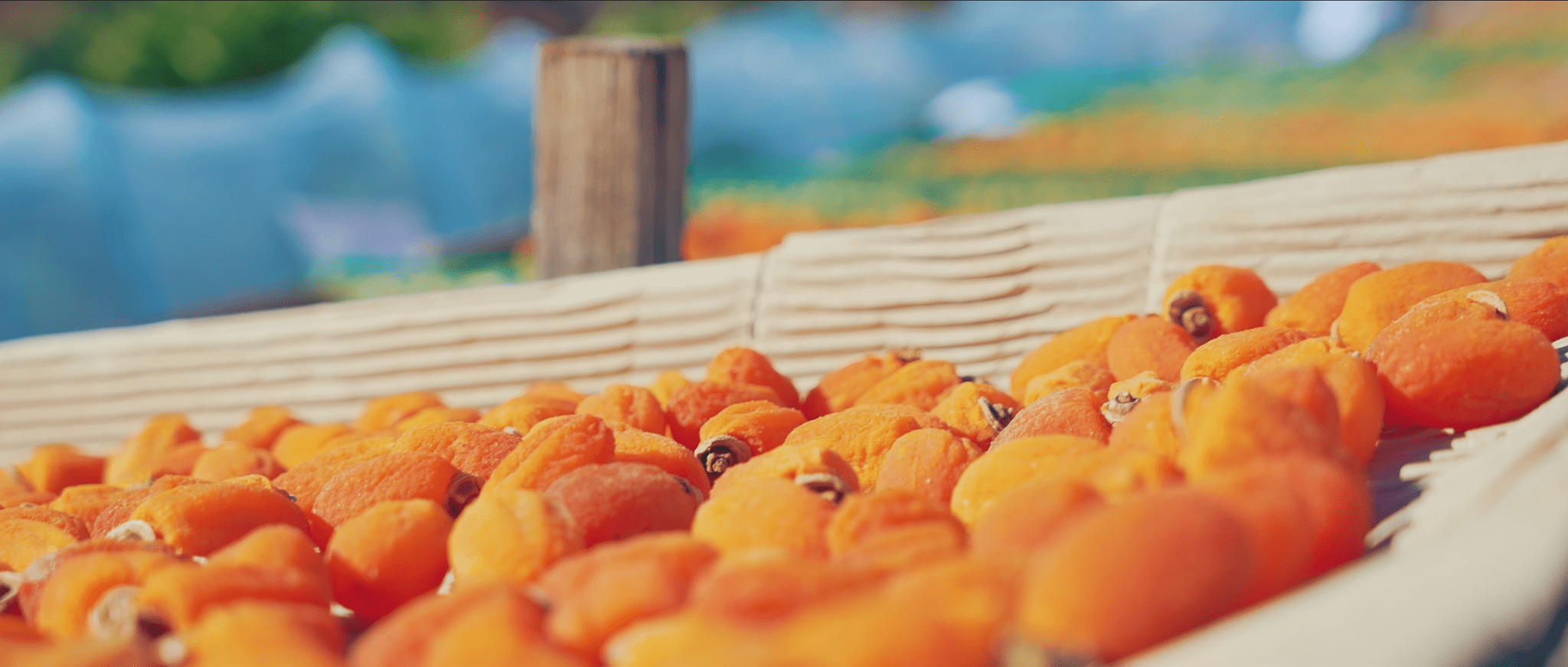
Persimmons are a familiar fruit overseas, but only a few East Asian countries have the custom of eating dried persimmons. Ichida-Gaki, with their bright orange hue when broken open, are becoming increasingly popular overseas, and in China they are gradually gaining recognition as a quality gift for the Chinese New Year. In Europe, where there is a strong interest in healthy and organic foods, they are also gaining attention as an additive-free, nutrient-rich dried fruit, as they do not contain sugar or preservatives and are rich in vitamin A and dietary fiber.
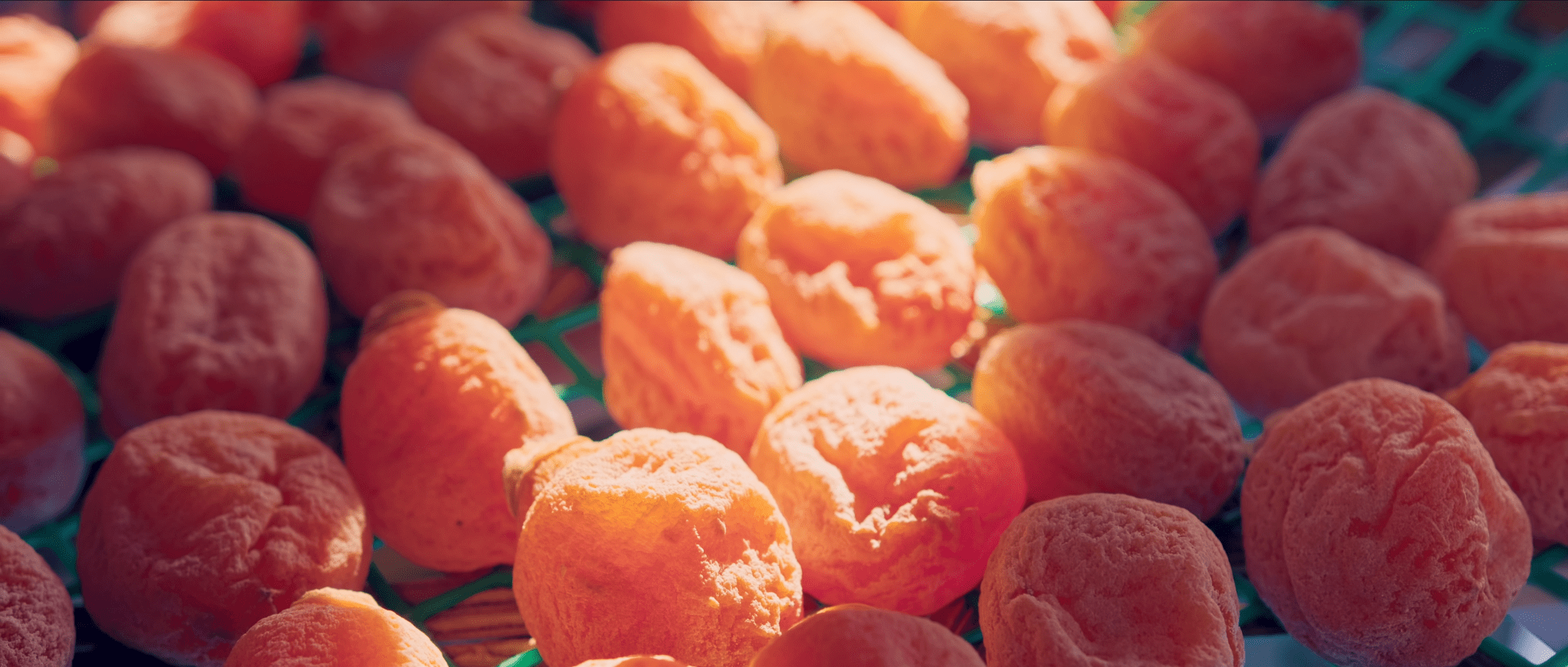
Ichida-Gaki are carefully produced by the blessings of nature and the people of Nagano. Its sticky, rich sweetness goes well with dairy products such as cheese, butter, and yogurt, and a set of Ichida-Gaki with cheese or butter is a perfect snack with wine or whiskey. Use them in meat dishes and salads to compliment the aesthetics and up the nutritional value. In Europe, Japanese persimmons appear on store shelves in autumn under the name “KAKI/CACHI”. In the cold winter that comes afterwards, it is perfect while sipping warm coffee or tea, savoring the natural sweetness concentrated in a little bite of the chewy Ichida-Gaki. It is the season to enjoy persimmons in the most luxurious way, warming your body with a glass of wine or whiskey.
